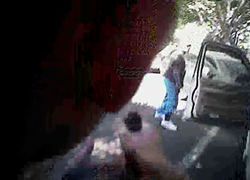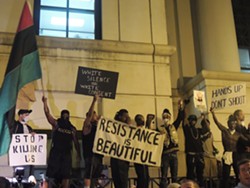Wednesday, November 30, 2016
News District attorney lays out case in decision to not charge officer in Scott shooting
Posted By Ryan Pitkin on Wed, Nov 30, 2016 at 6:08 PM
Following a press conference this morning in which District Attorney Andrew Murray announced that no charges would be brought against CMPD officer Brentley Vinson for shooting and killing Keith Scott in September, Murray released a 22-page report laying out his case for why his team of prosecutors does not believe Vinson acted criminally.
The report is broken into four parts: an overview of officer-involved shootings including legal standards and the district attorney's role in investigating them; a look at the Scott shooting itself that includes analysis of testimonies from officers on the scene and civilian witnesses, some of whom were said to later recant key claims; a closer legal analysis of why prosecutors do not believe Scott’s shooting was a criminal act; and a concluding statement from Murray that addresses the unrest seen in Charlotte following the shooting, among other things.
The following is a breakdown of the report, which can be read in its entirety here.
Part I: Overview of officer-involved shootings
This section begins by going over the role of a district attorney’s office in an officer-involved shooting, pointing out that a DA does not usually review cases in which police choose not to press charges. However, following an officer-involved shooting, the DA’s office does review all related files of the agency that carried out the investigation, in this case the State Bureau of Investigations.
The report emphasizes that today’s announcement is simply the result of the DA’s office deciding that prosecutors believe there is “not a reasonable likelihood of proving criminal charges beyond a reasonable doubt unanimously to a jury.”
A DA’s office stating that a shooting was not criminal does not mean prosecutors necessarily believe the shooting was not avoidable or that police followed proper protocol. This is important in that the CMPD and/or Brinson could still be vulnerable to a civil suit on those grounds. Representatives of the Scott family said at a press conference today they are still considering a civil suit.
The report then goes into detail about the legal standards regarding officer-involved shootings, explaining that a police officer has the same rights to self-protection that a civilian does. The report cites legal cases, including a Supreme Court case ruling that “[t]he ‘reasonableness’ of a particular use of force must be judged from the perspective of a reasonable officer on the scene, rather than with the 20/20 vision of hindsight.”
These legal standards are discussed in further detail and in direct relation to the Scott shooting in Part III.
Part II: The Scott shooting
Much of this part of the report goes over step-by-step findings of how investigators say the Scott shooting unfolded, much of which has been reported already. It states that officers doing surveillance in an unrelated case saw Scott rolling a marijuana blunt in his car and were going to ignore him until they then saw him holding a gun, at which time they attempted to arrest him.
The report quotes officers as describing Scott at the time he exited his car as “having a ‘blank stare,’ being ‘in a trance like state,’ and looking ‘like he just wasn’t there.’” These are all behaviors consistent with side effects of the drug Scott was prescribed to since suffering a traumatic brain injury in November 2015.
Vinson said it was then that he felt an imminent threat and shot Scott four times, stating, “I felt like if I didn’t do anything right then at that point it’s like he...he was gonna shoot me or he’s gonna shoot one a [sic] my buddies, um, and it was gonna happen right now.”
Scott did not raise his weapon at officers at any time during the incident, the implications of which are discussed in more detail in Part III.
The report then goes into detail about the overwhelming evidence that prosecutors say proves that Scott did, in fact, have a gun at the time of the incident, a fact that’s been debated by many who did not believe the CMPD’s original version of events. The report cites evidence from the scene, eyewitness accounts and statements from the man they say sold Scott the gun on September 2, less than three weeks before Scott was shot.
The report then analyzes eyewitness statements, painting a picture of a chaotic time following the shooting in which witnesses made statements to police and media that were later recanted, either by witnesses admitting to embellishing statements in the hours or days directly following the shooting or admitting to not actually being there as they originally claimed.
For example, directly following the shooting, Tahesia Williams reportedly told media that she watched Scott exit his vehicle and saw a book fall from his lap. She said he raised his arms and asked what he did wrong before being shot by a white police officer, claiming that Vinson, who is black, arrived later.
According to the report released today, three days after the shooting Williams admitted that she did not see the shooting and that she was actually sitting on the couch watching television with the volume up loud at the time the shooting happened. She reportedly told officers that she did not see a book when she came outside to the scene of the shooting after the fact.
The report cited a handful of other examples in which eyewitnesses made similar statements to police or media that were either found to be inconsistent with proven facts or recanted by the witness.
This part of the report concludes with a statement that after 63 agents from across the state spent 2,300 hours on their investigation, the SBI found no evidence that there was a book on scene or that any evidence, such as a gun, was planted.
Part III: Legal analysis
Much of this part of the report goes into an aspect that has been hardest to swallow for many who have watched video of Scott’s shooting in footage taken by police and Scott’s wife: whether he truly presented a threat to any of the officers’ lives that day.
The report cites two studies on reaction time that they say prove that Scott could have hypothetically raised his gun and shot at an officer before that officer or one of his fellow officers could have reacted, despite the fact that officers were already pointing guns at Scott. The report, however, also admits that there is no way of knowing what Scott’s intentions were that day.
The report quotes John C. Hall, former unit chief of the FBI’s Firearms Training Unit, as saying, “Simply expressed, an action will always occur before an appropriate reaction can be initiated and implemented. Action always beats reaction … The practical effect in the field of deadly force usage is that no law enforcement officer is required to wait or can be expected to wait until he is absolutely certain what it is that a subject is going to do, or has in his hand.”
Part IV: Murray’s conclusion
Andrew Murray’s concluding statement is a thoughtful one; an important human response after 20 pages of data and analysis of an incident that ended in a man’s life being lost. Murray reflects on the loss the Scott family has experienced while also looking at the bigger implications the Scott shooting had for Charlotte. He acknowledged a city in which inequality has acted as a breeding ground for the unrest the city saw after Scott’s killing.
The statement should be read in full, but I’ll pull a paragraph to quote here:
“In the days that followed Mr. Scott’s death, we watched as long-simmering frustrations boiled over. I heard observers say, ‘This is not Charlotte’ or ‘This is not the city that we love.’ But it is. This is Charlotte. This is where our friends, family, neighbors and colleagues felt so passionate that they marched on our streets to call for change. Let me be clear: I have not and will not condone violence or property damage as a means of expression. But the fact that criminal charges are not appropriate under the law in this particular case does not mean we can dismiss the concerns expressed by those who raised their voices to raise the consciousness of this community. I think it is time that all of us recognize that this is Charlotte, and not everyone experiences the same Charlotte.”
As with the original shooting, people have reacted in different ways throughout the city and country to today’s announcement. While some have expressed feeling a sense of closure, others have voiced their discontent with what they see as another refusal to hold police accountable.
As I send this to print, I am preparing to report on marches planned throughout the city by those who do not agree with today’s decision. Creative Loafing will continue to update readers on the community’s reaction.
One thing remains clear, hours after Murray’s press conference and more than two months after Scott’s shooting, it’s still far too early to tell the long-term effects the Scott shooting — and the reaction to it — will have on our city.
The report is broken into four parts: an overview of officer-involved shootings including legal standards and the district attorney's role in investigating them; a look at the Scott shooting itself that includes analysis of testimonies from officers on the scene and civilian witnesses, some of whom were said to later recant key claims; a closer legal analysis of why prosecutors do not believe Scott’s shooting was a criminal act; and a concluding statement from Murray that addresses the unrest seen in Charlotte following the shooting, among other things.
The following is a breakdown of the report, which can be read in its entirety here.
Part I: Overview of officer-involved shootings
This section begins by going over the role of a district attorney’s office in an officer-involved shooting, pointing out that a DA does not usually review cases in which police choose not to press charges. However, following an officer-involved shooting, the DA’s office does review all related files of the agency that carried out the investigation, in this case the State Bureau of Investigations.
The report emphasizes that today’s announcement is simply the result of the DA’s office deciding that prosecutors believe there is “not a reasonable likelihood of proving criminal charges beyond a reasonable doubt unanimously to a jury.”
A DA’s office stating that a shooting was not criminal does not mean prosecutors necessarily believe the shooting was not avoidable or that police followed proper protocol. This is important in that the CMPD and/or Brinson could still be vulnerable to a civil suit on those grounds. Representatives of the Scott family said at a press conference today they are still considering a civil suit.
The report then goes into detail about the legal standards regarding officer-involved shootings, explaining that a police officer has the same rights to self-protection that a civilian does. The report cites legal cases, including a Supreme Court case ruling that “[t]he ‘reasonableness’ of a particular use of force must be judged from the perspective of a reasonable officer on the scene, rather than with the 20/20 vision of hindsight.”
These legal standards are discussed in further detail and in direct relation to the Scott shooting in Part III.
Part II: The Scott shooting
Much of this part of the report goes over step-by-step findings of how investigators say the Scott shooting unfolded, much of which has been reported already. It states that officers doing surveillance in an unrelated case saw Scott rolling a marijuana blunt in his car and were going to ignore him until they then saw him holding a gun, at which time they attempted to arrest him.
The report quotes officers as describing Scott at the time he exited his car as “having a ‘blank stare,’ being ‘in a trance like state,’ and looking ‘like he just wasn’t there.’” These are all behaviors consistent with side effects of the drug Scott was prescribed to since suffering a traumatic brain injury in November 2015.
Vinson said it was then that he felt an imminent threat and shot Scott four times, stating, “I felt like if I didn’t do anything right then at that point it’s like he...he was gonna shoot me or he’s gonna shoot one a [sic] my buddies, um, and it was gonna happen right now.”
Scott did not raise his weapon at officers at any time during the incident, the implications of which are discussed in more detail in Part III.
The report then goes into detail about the overwhelming evidence that prosecutors say proves that Scott did, in fact, have a gun at the time of the incident, a fact that’s been debated by many who did not believe the CMPD’s original version of events. The report cites evidence from the scene, eyewitness accounts and statements from the man they say sold Scott the gun on September 2, less than three weeks before Scott was shot.
The report then analyzes eyewitness statements, painting a picture of a chaotic time following the shooting in which witnesses made statements to police and media that were later recanted, either by witnesses admitting to embellishing statements in the hours or days directly following the shooting or admitting to not actually being there as they originally claimed.
For example, directly following the shooting, Tahesia Williams reportedly told media that she watched Scott exit his vehicle and saw a book fall from his lap. She said he raised his arms and asked what he did wrong before being shot by a white police officer, claiming that Vinson, who is black, arrived later.
According to the report released today, three days after the shooting Williams admitted that she did not see the shooting and that she was actually sitting on the couch watching television with the volume up loud at the time the shooting happened. She reportedly told officers that she did not see a book when she came outside to the scene of the shooting after the fact.
The report cited a handful of other examples in which eyewitnesses made similar statements to police or media that were either found to be inconsistent with proven facts or recanted by the witness.
This part of the report concludes with a statement that after 63 agents from across the state spent 2,300 hours on their investigation, the SBI found no evidence that there was a book on scene or that any evidence, such as a gun, was planted.
Part III: Legal analysis
Much of this part of the report goes into an aspect that has been hardest to swallow for many who have watched video of Scott’s shooting in footage taken by police and Scott’s wife: whether he truly presented a threat to any of the officers’ lives that day.
The report cites two studies on reaction time that they say prove that Scott could have hypothetically raised his gun and shot at an officer before that officer or one of his fellow officers could have reacted, despite the fact that officers were already pointing guns at Scott. The report, however, also admits that there is no way of knowing what Scott’s intentions were that day.
The report quotes John C. Hall, former unit chief of the FBI’s Firearms Training Unit, as saying, “Simply expressed, an action will always occur before an appropriate reaction can be initiated and implemented. Action always beats reaction … The practical effect in the field of deadly force usage is that no law enforcement officer is required to wait or can be expected to wait until he is absolutely certain what it is that a subject is going to do, or has in his hand.”
Part IV: Murray’s conclusion
Andrew Murray’s concluding statement is a thoughtful one; an important human response after 20 pages of data and analysis of an incident that ended in a man’s life being lost. Murray reflects on the loss the Scott family has experienced while also looking at the bigger implications the Scott shooting had for Charlotte. He acknowledged a city in which inequality has acted as a breeding ground for the unrest the city saw after Scott’s killing.
The statement should be read in full, but I’ll pull a paragraph to quote here:
“In the days that followed Mr. Scott’s death, we watched as long-simmering frustrations boiled over. I heard observers say, ‘This is not Charlotte’ or ‘This is not the city that we love.’ But it is. This is Charlotte. This is where our friends, family, neighbors and colleagues felt so passionate that they marched on our streets to call for change. Let me be clear: I have not and will not condone violence or property damage as a means of expression. But the fact that criminal charges are not appropriate under the law in this particular case does not mean we can dismiss the concerns expressed by those who raised their voices to raise the consciousness of this community. I think it is time that all of us recognize that this is Charlotte, and not everyone experiences the same Charlotte.”
As with the original shooting, people have reacted in different ways throughout the city and country to today’s announcement. While some have expressed feeling a sense of closure, others have voiced their discontent with what they see as another refusal to hold police accountable.
As I send this to print, I am preparing to report on marches planned throughout the city by those who do not agree with today’s decision. Creative Loafing will continue to update readers on the community’s reaction.
One thing remains clear, hours after Murray’s press conference and more than two months after Scott’s shooting, it’s still far too early to tell the long-term effects the Scott shooting — and the reaction to it — will have on our city.
Speaking of...
-
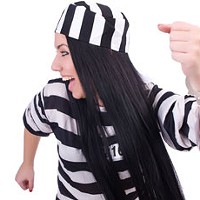
The Blotter: Inside Job
Oct 12, 2018 -

The Blotter: Southeast Bound and Down
Sep 7, 2018 -

The Blotter: You Got Served
Aug 31, 2018 - More »
Comments
Showing 1-1 of 1
Latest in The CLog
More by Ryan Pitkin
-
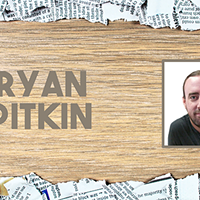
You're the Best... of Charlotte
Oct 27, 2018 -
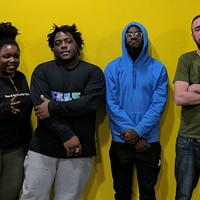
Listen Up: Cuzo Key and FLLS Go 'Universal' on 'Local Vibes'
Oct 25, 2018 -
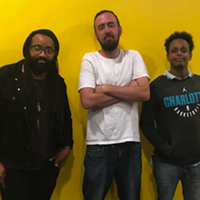
Listen Up: KANG is Back and Bla/Alt on 'Local Vibes'
Oct 18, 2018 - More »


